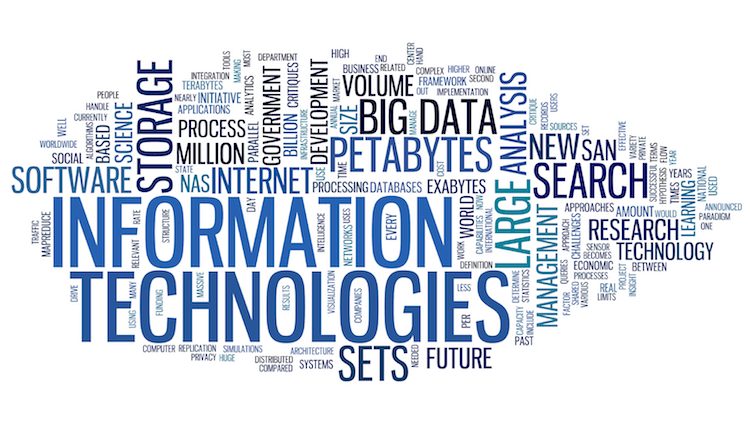Big Data and Pharma: Where Is the Greatest Impact?
Data and the analysis of that data guide drug development, product decisions, dosing and patient use, and pricing and reimbursement policy. Big Data may be where it is at, but is Big Pharma leveraging data to the fullest?
Big Data holds promise for the pharmaceutical industry, particularly as the healthcare industry, including pharmaceuticals, seeks to move to a value-based paradigm where patient centricity is king. But to what extent has this vision been realized, and what is needed for Big Data to reach full potential?
Inside data
More than 80% of life sciences companies have created new digital and innovation leadership roles to capitalize on the information technology transformation in healthcare, with nearly half hiring new chief information officers (CIOs) during the past three years, according to a recent study by the QuintilesIMS Institute in collaboration with Egon Zehnder, a global executive search and talent management firm. The rise of mobile, cloud, predictive analytics and other digital innovations offers new opportunities for advancing patient care as companies launch innovative products at a more rapid pace and in more therapy areas. These dynamics, along with spending and operational constraints, require life sciences CIOs to expand specialized IT knowledge and skills within their organizations and to play a more strategic role in driving commercial success through digital transformation.
The study, New Strategic Information and Technology Roles in Life Sciences Companies, includes a proprietary Information and Technology Transformation Scoring framework (ITTS) to assess progress among the top 50 global life sciences companies. ITTS tracks five areas of technology conversion: Innovation/Disruption, Organizational Transformation, Big Data/Analytics, Infrastructure, and Future of Work.
“While most life sciences companies have centralized their IT functions to drive operational gains, they have been slow to achieve the breakthrough transformation that’s possible by capitalizing on today’s technologies,” said Murray Aitken, QuintilesIMS Health senior vice president and executive director of the QuintilesIMS Institute, in commenting on the study. “Of the companies we assessed using our ITTS framework, just 15% are fully capturing the value of the digital revolution.”
So where do companies stand with this IT transformation? According to the study, transformation is underway within all life sciences companies, across varying strategic and operational areas, and at different rates. Large companies outperform their medium-sized competitors on average across all elements of the ITTS assessment. Of the companies surveyed, 15% are considered market leaders, demonstrating significant progress on both strategic and operational dimensions. On average, 85% of companies with centralized IT functions have achieved a higher level of technology transformation—as have companies that use cloud-based technologies for more than 25% of their software needs.
The use of so-called big data is an important tool in pharmaceutical companies, but how is it being applied? On one level, the study points out that the rise of big data in the life sciences links to a proliferation of transactional health data collected in digital formats over time and converted into non-identified patient data formats. Sources of this data include claims made to health plans or through pharmacies and physicians’ offices, hospital EMRs, government programs, social media, mobile devices and wearable sensors. “Companies are increasingly reliant on this data and complex analytic systems to better understand and communicate with their customers, and prove the value of their medicines,” notes the study.
On a technology basis, the study points to several platforms or ways in which pharmaceutical companies are applying the data. So-called “machine learning” has contributed to the value derived from big data by enabling systems to recognize patterns within big data and intelligently learn from query responses or make predictions. Intelligent analytic engines and supercomputers like IBM Watson and WolframAlpha, are notably able to learn from mistakes to refine their suggestions among search engines. The study points out that this capability can also be built in to sales and marketing systems, making customer engagement much more precise. Applying this approach, life sciences companies are slowly shifting to a system of customer anticipation or predictive analytics—where the system can predict next best customer, channel or action.
The study explains that cloud technologies, such as cloud storage and software, have been much discussed in the past several years in the life sciences as vendors have begun to create life sciences specific applications with advanced analytic capabilities that allow companies to leapfrog development cycles. “Although adoption by life sciences and healthcare companies has been slower than in other industries, companies are now ‘clouding’ various compute and storage resources to reduce complexity and achieve flexibility: both in scale and cost base,” notes the study. “Cloud is also increasingly a way to obtain external sources of big data without large infrastructure builds, facilitating access to de-identified EHR data for use as real-world evidence.
The study points out that other digital technologies are having an impact. “Mobile, wearables, and other new digital technologies are now a new frontier of competition among life sciences companies, changing the way companies engage and support their customers and even launch their products,” says the study. It points to the rise of smartphones and wearable technologies along with a growing consumer interest in fitness that offer opportunity in mobile health applications (mHealth apps). According to the study, the number of mHealth apps now exceeds 165,000 and manufacturers are looking at ways to leverage these across stakeholders, including apps for physicians that ease the use of complex products, or for patients to assist in disease understanding and management.
The study found that while IT departments are using analytic tools that reduce complexity, advanced predictive and prescriptive capabilities remain underused. Within sales and marketing functions, 80% of companies assessed have systems in place that leverage visualization tools, and more than half have a multichannel marketing strategy in place for their North America and Europe operations. However, fewer than 10% of life sciences companies deploy systems that apply both predictive and prescriptive capabilities to guide decisions.
Supplier impact
For Procurement organizations, one potential advantage of this increased IT focus is the opportunity to increase efficiency, particularly in working with suppliers as part of an overall emphasis on operational efficiency. “The simultaneous investments required for upcoming launches has meant that IT departments are being asked to do more with limited resources,” said the study. “Companies initially able to reduce costs by renegotiating with suppliers are now finding their ability to directly lower operating costs has diminished. This has meant the IT function and the CIO must now shift strategy to obtain operational efficiencies and greater performance from the resources they already have—to reallocate savings to new spending on innovation. Reorganization and centralization initiatives, and on-demand resourcing models have become a necessity to reduce organizational expenses,” said the study.
These efficiencies are also through a more centralized approach in the IT function, such as centers of excellence (COEs) for IT functions to standardize and improve processes across the organization as well as centralization of hardware procurement and other technology capability under shared services, which helps the CIO to create efficiencies, deliver value consistently across the entire organization, and speed the pace of transformation. This centralized approach also includes the role of business processes as a service (BPaaS) outsourcing for on-demand resourcing, which allows an organization to be more lean and agile, scale up and down rapidly, and focus on value-added activities, says the study. According to the ITTS survey, companies that have centralized their IT function tend to outperform companies that have not. The study showed that most companies (85%) have now merged their IT function under one global or corporate CIO with governance across all brands rather than maintaining individual brand CIOs or mixed models. Many companies have further centralized the governance of specific IT sub-functions into COEs, with 33% of companies reporting that over 75% of their IT functions are governed by a single COE and another 25% reporting that COEs now govern 51–75% of functions. Over half (59%) of companies appear to use a shared service procurement function for at least 75% of the business.
The CIO of the future
On a staffing level, as leadership in new IT functional areas is recognized as being important to success, CEOs are hiring new CIOs and establishing digital and innovation roles. Nearly half of the life sciences companies assessed have CIOs who have been in place less than three years, and 70% in place fewer than five years. In small companies, more than 40% of all CIOs were hired within the past year. Companies with CIOs having a tenure of less than five years outperform on the ITTS framework overall, especially in the key areas of Innovation/Disruption and Big Data/Analytics. More than two-thirds of today’s CIOs were hired from outside the company, with external hires ranging from 82% for small companies to 52% for larger organizations. Despite the critical role of the CIO in business transformation, fewer than one in four are part of their company’s executive team. Within large life sciences companies, just one in seven CIOs serves on the executive team.
The study found that CIOs remain in the best position to lead technological innovation, but require new digital competencies. The CIO role has narrowed in scope in most life sciences companies as responsibility for areas such as R&D bioinformatics, genomics and real-world evidence have moved to other parts of the organization. More than 80% of companies have established new digital data and innovation positions that challenge the traditional CIO role. With new “digital” competencies viewed as key for success, assessments by CEOs of CIO candidates focus on a combination of both core and digital competencies. The core competencies of strategic orientation, results orientation, team leadership and collaboration/ influence remainb essential. In pursuit of future digital leaders, CEOs also are seeking candidates with strengths in consumer centricity, digital fluency, data orientation, adaptability and change leadership, according to the study.






